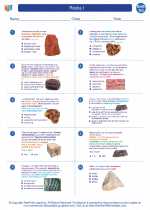Faulting in Earth Science
Faulting is a fundamental concept in geology that relates to the movement and displacement of rocks along a fracture or a zone of fractures in the Earth's crust. Understanding faulting is crucial for comprehending the processes that shape the Earth's surface and can also have significant impacts on human activities, such as causing earthquakes and influencing the formation of natural resources.
Types of Faults
There are several different types of faults, each with unique characteristics based on the movement of the rocks on either side of the fault plane:
- Normal Fault: This type of fault occurs when the hanging wall moves down relative to the footwall. It is associated with extensional tectonic forces.
- Reverse Fault: A reverse fault forms when the hanging wall moves up relative to the footwall. It is typically linked to compressional tectonic forces.
- Thrust Fault: A specific type of reverse fault with a shallow dip angle, often associated with mountain-building processes.
- Strike-Slip Fault: In this type of fault, the movement is predominantly horizontal and parallel to the strike (direction) of the fault plane. The two main types of strike-slip faults are left-lateral and right-lateral, depending on the relative motion of the blocks on either side of the fault.
- Oblique-Slip Fault: This type of fault involves a combination of both vertical and horizontal movement along the fault plane.
Causes of Faulting
Faulting is primarily driven by tectonic forces, including:
- Compression: This occurs when tectonic plates move towards each other, resulting in reverse or thrust faulting.
- Extension: When tectonic plates move apart, normal faulting can occur due to the stretching and thinning of the crust.
- Shear Stress: Horizontal movement along a fault plane is induced by shear stress, leading to strike-slip and oblique-slip faulting.
Effects of Faulting
The movement along faults can have various effects on the Earth's crust, including:
- Earthquakes: Sudden release of energy along a fault plane can cause seismic waves and result in an earthquake.
- Uplift and Subsidence: Depending on the type of faulting, uplift or subsidence of the ground surface can occur, influencing landscape features.
- Formation of Geological Structures: Faulting plays a crucial role in the formation of mountains, valleys, and other geological features.
Study Guide
To study faulting effectively, consider the following key points:
- Understand the different types of faults and their characteristic movements.
- Learn about the tectonic forces and stress conditions that lead to faulting.
- Explore real-world examples of faulting and their impacts, such as famous fault lines and associated seismic events.
- Practice identifying faults on geological maps and cross-sectional diagrams.
- Understand the significance of faulting in geological processes and its implications for human society.
By mastering these aspects of faulting, you will develop a comprehensive understanding of this important geological phenomenon.
[Faulting] Related Worksheets and Study Guides:
.◂Earth Science Worksheets and Study Guides High School. Rocks I

 Worksheet/Answer key
Worksheet/Answer key
 Worksheet/Answer key
Worksheet/Answer key
 Vocabulary/Answer key
Vocabulary/Answer key
 Vocabulary/Answer key
Vocabulary/Answer key
 Vocabulary/Answer key
Vocabulary/Answer key
